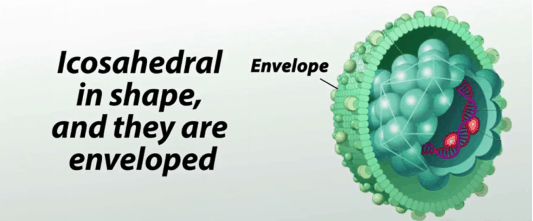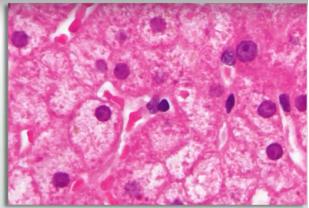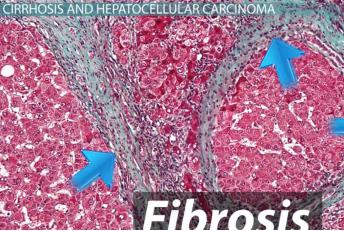There are all sorts of nasty things that can damage your body. In the case of the liver long-term alcohol consumption, drug abuse or toxins are among the many things that can damage the liver beyond repair. However, there are also some viruses that can do some liver damage as well. The Hepadnaviridae family is that one type of virus in this family spells double trouble in three different ways.
If that didn’t catch your attention for this lesson then how about this-this virus right now affects more people than the entire population of the United States has at some point in their life infected. About two billion people worldwide and kills upwards of a million people every year. Hopefully, that was enough to grab your attention as we move into the details of this family as a whole. When it comes to this family’s genome the viruses of this family have partially double-stranded DNA.

This means in a circular in shape with the respect to the structure of the viruses in the HVP had Hepadnaviridae family they are Icosahedral in shape and they are an envelope. This means that because of their envelope they are rather easily destroyed. In the case of a virus, their envelope is very fragile and one little puncture wound can cause it to tear apart killing the virus inside. The envelope is many ranging from disinfectants to dry air.
These are nasty viruses spread using many different means to one end it can get to you through contaminated blood transfusions, actual intercourse, the reuse of contaminated needles or syringes and during childbirth. Basically, using one way or another it spreads through contaminated body fluids namely the blood. The single most important virus in this family is the hepatitis B virus.
Hepatitis B or HBV
The people who have had this virus for a long time in their liver cells called Hepatocyte have a characteristic ground-glass appearance to their liver cells. When looked at under the microscope you might be wondering why we even look for HBV in the liver anyways. Well, it’s because HBV causes not surprisingly hepatitis B.

How Hepatitis B causes liver damage?
Hepatitis B is a condition caused by the hepatitis B virus that causes severe inflammation of the liver. What happens is is that your body’s immune system recognizes the fact that this virus has infected your liver cells. A rightfully so like any good defender your immune system tries to kill the virus. However, part of our body’s defense mechanisms aren’t all that well designed. The cells involved in trying to kill off the virus spread about all sorts of enzymes and chemicals that cause inflammation but they do so indiscriminately they cannot target the virus alone without hurting the liver cells in the process so as your immune system tries to kill the virus via the inflammatory processes it ends up killing your liver . As mentioned all the way in the beginning of this lesson this virus has “Three separate double whammies” that affect many people around the world.
The first is that it not only causes inflammation of the liver but it also causes cirrhosis. Liver cirrhosis is a disruption of normal liver function and structure as a result of prolonged liver damage. You may have heard this term before as alcoholics are predisposed to getting this condition. Unlike many other organs of your body the liver is actually able to regenerate if damaged. The only problem is that it does so with very poor efficiency. This causes the formation of discombobulated masses of liver cells that cannot function together. It’s almost entirely useless in addition the prolonged inflammation caused by our body’s immune response to the virus, essentially cutting the liver apart.

Body tries to heal these wounds through a process called fibrosis which is basically the formation of scar tissue. This virus cuts deep and causes an ugly painful and non-functional scar to appear in the place of functional liver cells.
Some viruses can cause cancer some of the time. HBV is one of those viruses it causes something called a Hepatocellular carcinoma which is the most common form of liver cancer. Hepa-adnaviridae refers to liver cells. Now it should also make sense why this family is called Hepa-adnaviridae. It gets the HEPA from hepto because it affects the liver.
Affordable and Fast STD Testing. Test Now!
Did you know that chronic hepatitis B and C virus infections can cause liver cancer?
There are two ways Hepatitis can cause cancer in the body.
- Use of Genome: A virus may use its genome to start a process called Oncogenesis in the cell it infects. Oncogenesis is defined as the creation of a tumor or cancer. What basically happens is that the genes inserted by a virus into a host cell’s. Genome can trigger changes that lead to uncontrolled growth of a previously healthy cell. This process is only one component in the formation of cancer.

Without misunderstanding over a tumor and cancer, a tumor is just a swelling of any sort and it can be benign or relatively unharmful. However, other tumors can be or eventually become malignant or cancerous.
- Triggering of an Inflammatory process: Another way by which a virus can causecancer is by triggering in the inflammatory process as mentioned before decade’s worth of Inflammation caused by anything at all not just a virus can actually cause a cell such as a liver cell to become cancerous. It is presumed that the molecules that caused the inflammation lead a normal cell to incur lots of damage to his DNA which over time leads to uncontrolled cell growth.
How it leads to Hepatitis D?
HPV causes is through something called the hepatitis D virus. This is a virus that increases the complications associated with hepatitis B. The hepatitis D virus is not part of the Hypadnaviridae family and is currently not assigned to any virus family. In essence the hepatitis D virus must infect simultaneously with HBV or in fact after HBV has already established an infection in order to function properly. Overtime it will exacerbate the effects of HBV leading to a higher likelihood of developing cirrhosis, cancer and liver failure.
There is no vaccination for hepatitis D, however, hepatitis B can be prevented by getting a series of vaccines. This vaccine may be a really good idea because infection with the hepatitis B virus may infect a person chronically that is for a long time and it is this chronic infection which causes lots of problems discussed here.
Summary
Let’s go over the important points one more time.
- The single most important virus in the Hepadnaviridae family is the hepatitis B virus or HBV for short. This virus which causes hepatitis B that causes severe inflammation of the liver.
- Not toforget that the hepatitis D virus. It is a virus that increases the complications associated with hepatitis B.
- HBV alone or with the hepatitis D virus can cause cirrhosis, which is a disruption of normal liver function and structure as a result of prolonged liver damage.
- Hepatocellular carcinomawhich is the most common form of liver cancer, it may cause this disease to occur by imposing its gene structure into that of our liver cells causing a process called OncoGenesis.
- OnoGenesis is defined as the creation of atumor or cancer.
The good news is that there is a vaccine to prevent hepatitis B virus infection and there are effective treatment options for hepatitis C virus infection. Chronic infection with hepatitis B and C viruses can cause inflammation, or swelling, of the liver. Long term damage to the liver from these viruses can increase the risk of liver cancer.
How Hepatitis B or C spreads?
Hepatitis B and C viruses can be passed from person to person through blood, other bodily fluids, or sexual contact.
A newborn may get infected with hepatitis B virus from its mother if she is infected. Although hepatitis B and C virus infections are contagious diseases, liver cancer is not. The hepatitis B vaccine can reduce your risk of liver cancer.
The U.S. Centers for Disease Control and Prevention, or CDC, recommends infants receive the vaccine, as should at-risk adults who have not had hepatitis B virus infection or the hepatitis B vaccine.
How is Hepatitis affecting a particular age group in the US?
There is no vaccine currently available for hepatitis C virus. Americans born between 1945 and 1965 are five times more likely to have a hepatitis C virus infection than are other adults.
That’s why the CDC recommends that anyone born during this time get tested for the virus. In 2013, the US Food and Drug Administration approved the use of two new antiviral drugs to treat chronic Hepatitis C infection, and there are now several treatment options available.
Statistics Indicating the growth of Hepatitis in other racial and ethnic groups in US?
Early diagnosis and treatment of hepatitis C virus infection can reduce your risk of liver cancer.
New diagnoses of liver cancer are highest among American Indians and Alaska Natives, followed by Asians and Pacific Islanders and Hispanics.
In all racial and ethnic groups, new diagnoses of liver cancer are twice as high in men as they are in women.
Rates of new liver cancer diagnoses for all races and ethnicities increase with age, with some variation among racial and ethnic groups.
For example:
In recent years, new diagnosis rates among blacks showed a peak at ages 60 to 64 and then decreased among persons older than 64.
In contrast, diagnosis rates among American Indians and Alaska Natives showed a peak among persons aged 55 to 59, followed by a slight decline among persons aged 60 to 64, and then an increase until ages 80 to 84.
What are the risk factors influencing the growth of Hepatitis in the community?
In addition to chronic viral hepatitis infections, other important risk factors for liver cancer include:
- Heavy alcohol use
- Diabetes
- Obesity
- Metabolic syndrome
Talk with your doctor about treatment options for hepatitis B and C virus infections and other ways to reduce your risk for cancer.
Each year the National Cancer Institute, American Cancer Society, the Centers for Disease Control and Prevention, and the North American Association of Central Cancer Registries collaborate to provide updated information on cancer in the United States.
This year’s Annual Report to the Nation highlights the increasing burden of liver cancer and emphasizes efforts to prevent, identify and treat chronic hepatitis B and C viral infections and other key risk factors for liver cancer. For more information on hepatitis B vaccine and treatment options for viral hepatitis B and C infection. Thus it is advised to get tested for Hepatitis B near you on observing the Hepatitis B symptoms.
References


